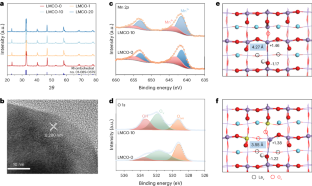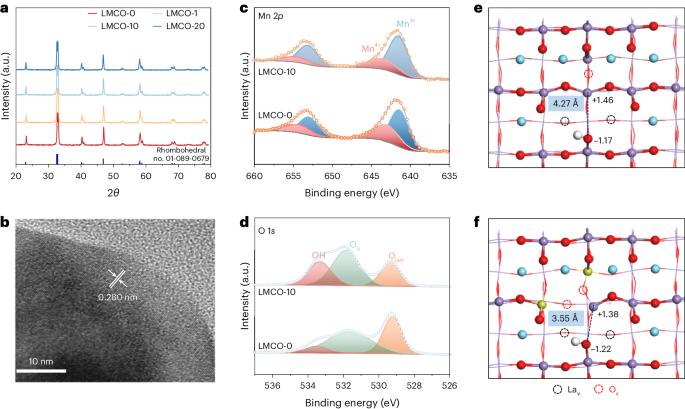利用 LaMn1-xCuxO3 光催化乙烷脱氢生产乙烯
IF 49.7
1区 材料科学
Q1 ENERGY & FUELS
引用次数: 0
摘要
工业规模的乙烯生产主要采用化石燃料驱动的乙烷蒸汽裂解法,这是一种高温、高能耗的工艺。另一种以太阳光为动力、在环境条件下运行的光化学途径有可能减少一些相关的温室气体排放。在此,我们报告了利用 LaMn1-xCuxO3 将乙烷光催化脱氢为乙烯和氢气的过程。这种包晶氧化物具有氧化还原活性路易斯酸位点(包括 Mn(III) 和 Mn(IV))和路易斯碱位点(包括 O(-II) 和 OH(-I)),统称为表面受挫路易斯对。我们发现,调整这些位点的相对比例可以优化乙烷脱氢的活性、选择性和产率。达到的最高乙烯生产率和乙烷转化率分别约为 1.1 mmol g-1 h-1 和 4.9%。我们展示了一个简单的户外原型,以证明太阳能乙烯工艺的可行性。此外,技术经济分析还揭示了利用乙烷进行工业规模太阳能乙烯生产的经济潜力。本文章由计算机程序翻译,如有差异,请以英文原文为准。


Ethylene production via photocatalytic dehydrogenation of ethane using LaMn1−xCuxO3
Industrial-scale ethylene production occurs primarily by fossil-powered steam cracking of ethane—a high-temperature, high-energy process. An alternative, photochemical, pathway powered by sunlight and operating under ambient conditions could potentially mitigate some of the associated greenhouse gas emissions. Here we report the photocatalytic dehydrogenation of ethane to ethylene and hydrogen using LaMn1−xCuxO3. This perovskite oxide possesses redox-active Lewis acid sites, comprising Mn(III) and Mn(IV), and Lewis base sites, comprising O(-II) and OH(-I), collectively dubbed surface-frustrated Lewis pairs. We find that tuning the relative proportions of these sites optimizes the activity, selectivity and yield for ethane dehydrogenation. The highest ethylene production rate and ethane conversion achieved were around 1.1 mmol g−1 h−1 and 4.9%, respectively. We show a simple outdoor prototype to demonstrate the viability of a solar ethylene process. In addition, techno-economic analysis revealed the economic potential of an industrial-scale solar ethylene production from ethane. Light-driven approaches could lower the carbon footprint of chemical production. Here the authors use the perovskite oxide LaMn1−xCuxO3 as a photocatalyst to convert ethane to ethylene and hydrogen.
求助全文
通过发布文献求助,成功后即可免费获取论文全文。
去求助
来源期刊

Nature Energy
Energy-Energy Engineering and Power Technology
CiteScore
75.10
自引率
1.10%
发文量
193
期刊介绍:
Nature Energy is a monthly, online-only journal committed to showcasing the most impactful research on energy, covering everything from its generation and distribution to the societal implications of energy technologies and policies.
With a focus on exploring all facets of the ongoing energy discourse, Nature Energy delves into topics such as energy generation, storage, distribution, management, and the societal impacts of energy technologies and policies. Emphasizing studies that push the boundaries of knowledge and contribute to the development of next-generation solutions, the journal serves as a platform for the exchange of ideas among stakeholders at the forefront of the energy sector.
Maintaining the hallmark standards of the Nature brand, Nature Energy boasts a dedicated team of professional editors, a rigorous peer-review process, meticulous copy-editing and production, rapid publication times, and editorial independence.
In addition to original research articles, Nature Energy also publishes a range of content types, including Comments, Perspectives, Reviews, News & Views, Features, and Correspondence, covering a diverse array of disciplines relevant to the field of energy.
 求助内容:
求助内容: 应助结果提醒方式:
应助结果提醒方式:


